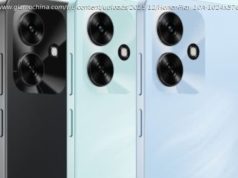Commentary: As Google takes heat over burn-in on the Pixel 2 XL, Apple acknowledges potential issues with the screen on its iPhone X.
Be prepared for imperfections.
No, Apple hasn’t suddenly invented a magical, revolutionary OLED screen that gives you all the dramatic color without any drawbacks.
In an era of phone fatigue and oh so similar designs, the builders of the gadgets that have become our boon companions are looking for anything that might offer a perceived advantage over their rivals. Brighter, shinier screens are one such perceptual jewel. (The iPhone X also has, among other things, that future-is-now Face ID technology.)
On Friday, Cupertino updated its display support page to make clear that the X might suffer a little image retention, too.
Apple insists, though, that this screen is „the best OLED display that has ever shipped in a smartphone“ and that it has engineered the display to beat everyone else at „reducing the effects“ of burn-in.
It’s still OLED.
This means, the company explained, that „with extended long-term use, OLED displays can also show slight visual changes. This is also expected behavior and can include ‚image persistence‘ or ‚burn-in,‘ where the display shows a faint remnant of an image even after a new image appears on the screen.“
Apple did not immediately respond to a request for additional comment.
The iPhone X has enjoyed mostly excitable reviews. My colleague Scott Stein called it „an overdue and winning evolution of the iPhone.“
But in order to have a bright, shiny screen, you have to be prepared for imperfections.
Surely you’ve already learned in life that shiny things always come with a little blemish here and there.






